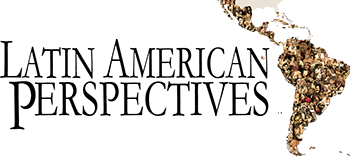Informality, Class Structure, and Class Identity in Contemporary Argentina
by Rodolfo Elbert
The dynamics of peripheral capitalism in Latin America includes the employment or self-employment of a significant proportion of the working class under informal arrangements. The neoliberal transformations of the 1990s deepened this feature of Latin American labor markets, and it was not reversed during the period of economic growth that followed the collapse of neoliberalism. In this context, sociological debates have focused on the relationship between the formal and the informal fractions of the working class. Examination of the biographical and family linkages between formal and informal workers in Argentina and the effect of these connections on the patterns of class self-identification of individuals shows that lived experience across the informality boundary makes formal workers similar to informal workers in terms of class self-identification. This research provides preliminary evidence that the two kinds of workers belong to the same social class because of the fluidity of the boundary that separates them. Instead of a class cleavage, this boundary is better defined as the separation between fractions of the working class.
La dinámica del capitalismo periférico en América Latina implica la informalidad laboral (sea entre trabajadores contratados o autónomos) de una sustancial parte de la clase obrera. Las transformaciones neoliberales de los años noventa profundizaron esta característica de los mercados de trabajo latinoamericanos, y el problema no se revirtió durante el período de crecimiento económico que siguió al colapso del neoliberalismo. En este contexto, los debates sociológicos se han centrado en la relación entre los grupos formales e informales de la clase obrera. Un análisis de los vínculos biográficos y familiares entre los trabajadores formales e informales en Argentina y el efecto de dichas conexiones en los patrones individuales de autoidentificación de clase muestra que la experiencia vivida en los límites de la informalidad hace que los trabajadores formales se consideren similares a los informales en términos de identificación de clase. Esta investigación brinda evidencia preliminar de que los dos tipos de trabajadores pertenecen a la misma clase social.
CONTINUE READING THE FULL ARTICLE HERE


No comments:
Post a Comment